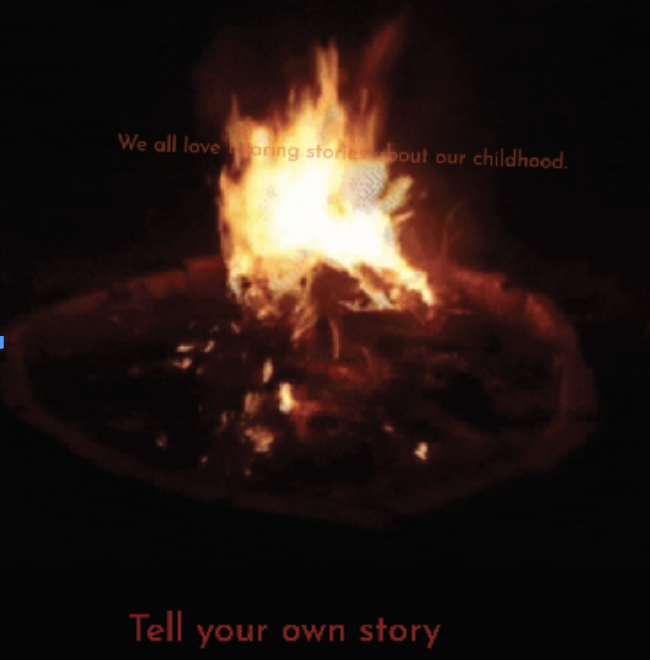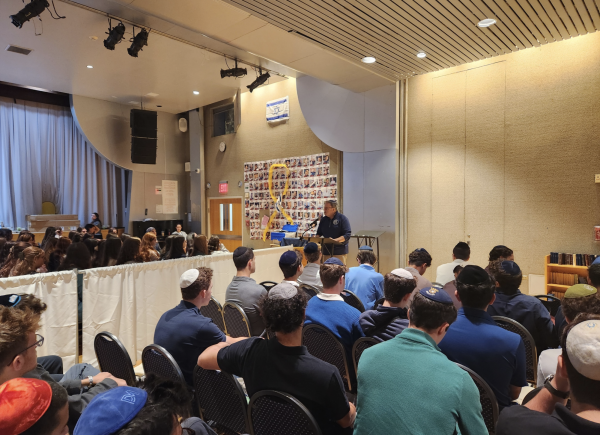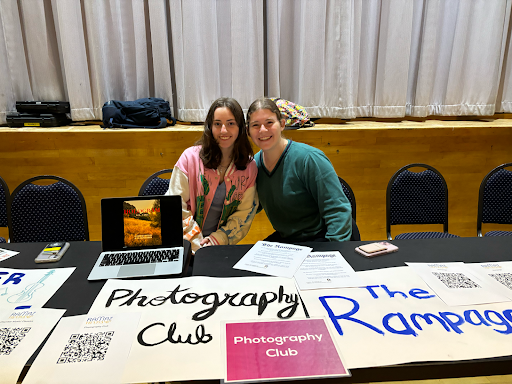Decameron Project
This year, the Ramaz community welcomed a new project that encourages storytelling on a large scale. A group of teachers and students have been organizing meeting times to collect and record stories to post on a website and spread a feeling of inclusivity and comfort to the Ramaz community. Besides that, the other objectives of the project are to foster meaningful yet playful conversations based on the stories being told in a collaborative forum.
The project started when Ms. Rabhan reached out to Dr. Jucovy, at the start of the lockdown last year to help quell her anxiety. He advised her to think of this time period as an adventure, and mentioned Boccacio’s Decameron, a book with a frame tale surrounding 100 stories that had been written during plague years. She began to think of creative projects that might help her and her students deal with the new reality. During the summer she read an issue of The New York Times Magazine, called The Decameron Project, and, remembering her conversation with Dr. Jucovy, decided to do her own version for Ramaz. During the late summer months, they started developing the project by reaching out to the administration, other teachers, and students they thought would be valuable contributors and introduced the idea to them. The main concept they wanted to push for the most was for students to feel comfortable to take initiative and act on their own.
Since the beginning of the project, they have gathered countless stories and compiled them all onto a website created by Levi Lesches ’21 and David Tarrab ’23. Each teacher was appointed with different responsibilities to take care of. Ms. Litwack was selected to create a portal called “The Glowfest”, based on “The Moth.” Rabbi Shiowitz was appointed to head a Judaic Studies sector of the project where people would share stories of times where they felt more connected to their religion.
Ms. Litwack has been working on developing her portal. She gives mini-lessons to students who were asked to share stories at their respective grades moth nights. She meets with her team of students on Fridays to discuss their plan, and usually a half-hour before their sessions to make sure everything is set up. They start off the session with people who were planning to tell stories, then open it up to anyone willing to share a story within the theme. Although she thinks it’s helpful to set guidelines for the types of stories to contribute by instituting themes. She hopes that they can one day just start sharing more broad topics. She also hopes to find more ways to spread the word and encourage more people to join the sessions.
Rabbi Schiowitz loved this idea as a contrast to topics we study in school since he has a personal spin on every story. His true fascination with the project is that teachers and students are being welcomed to learn about each other and relate to one another on another level. They started off his portal by having a meeting with Judaic studies teachers sharing stories based on their religious connections. When he was first introduced to the project and started thinking more about the power of storytelling, he found it especially interesting that the Torah, which is supposedly the Judaic Lawbook, is not only a book of laws but rather a book of stories intertwined with laws and lessons. This deepened his interest in storytelling and his interest in the project as a whole.
At the beginning of the project launching, they started reaching out to students to lead different parts of the project. David Tarrab and Levi Lesches were recruited to create a website. Tarrab was excited and interested in the possibility of working with Lesches on a technological level and was eager to begin working on creating the website. Lesches was invited to lead the technology group and was especially eager to see how far he could push his website/ app skills, since the only other app he created was designed to be useful, while this would be designed to be an immersive experience. Joyce Cayre is the head of the Junior Grade Glowfest and was excited to be involved. She especially loves the way that everyone is welcome to share their stories and experiences and learn more about each other.
They are currently focusing on broadening the project into different topics. Dr. Jucovy hopes for the project to expand even past non-fiction stories. He thinks that by creating stories from our imagination, not only can we learn more about each other, but we can move forward with the idea that the project is creative and artistic. Ms. Abramson thinks it’s important for people to share the more “random” stories they remember because there needs to be a reason they end up remembering certain things. She believes it’s important to figure out why we subconsciously remembered certain stories. She thinks it’s important for us to analyze these stories and figure out what lessons we can learn that our subconscious is hinting at.
Outside of the project, Dr. Jucovy and Ms, Rabhan have put together a senior mini-course completely based on the Decameron Project. Ms, Rabhan also introduced the “little book” project to her art classes. This is an assignment where every student is assigned a mini sketchbook and draws out their stories after introducing it with a sentence. The idea is to utilize a person’s memories and create art out of a story they enjoy telling. Rabbi Schiowitz also adopted the idea of storytelling for assemblies on Pesach, where people shared different traditions they followed at their personal seders.
Both Dr. Jucovy, and Ms. Litwack agree that despite the fact that the project was first introduced due to the outbreak of the pandemic, it would be beneficial for it to continue past the immediate crisis and to become an active feature of the Ramaz life. Dr. Jucovy also hopes that they can expand past just the current student body and faculty from contributing but also alumni and past personnel. The hope is for all parts of the Ramaz community- past and present- to be involved since this is a project to expand horizons and learn life lessons. The camp fires will keep burning even as the school returns to its more traditional form.



